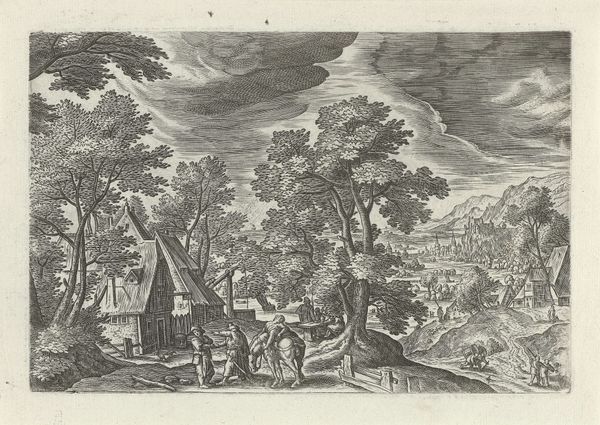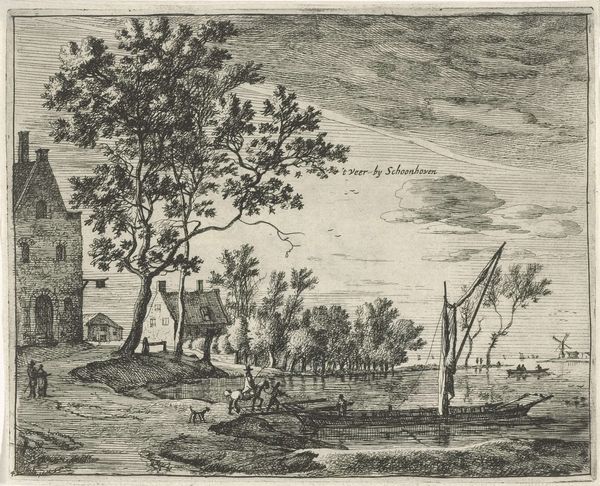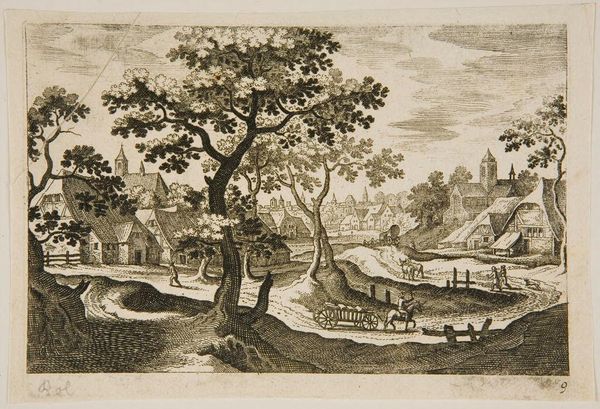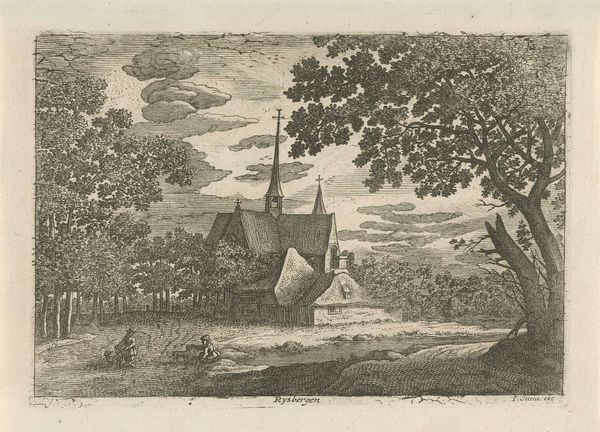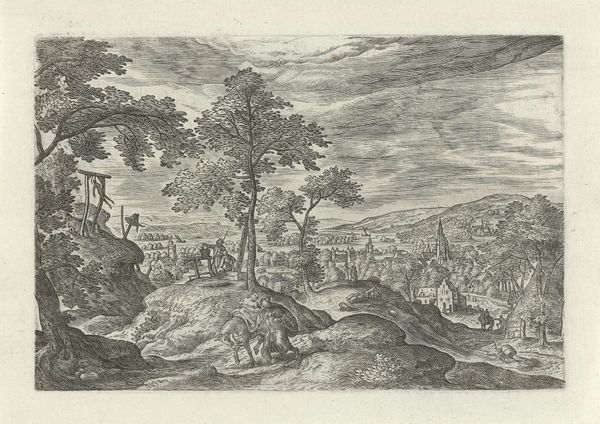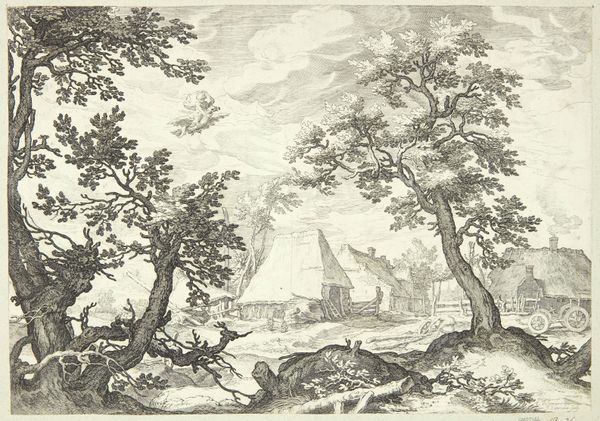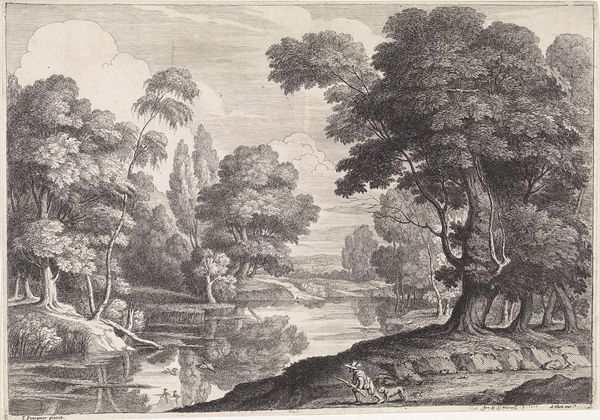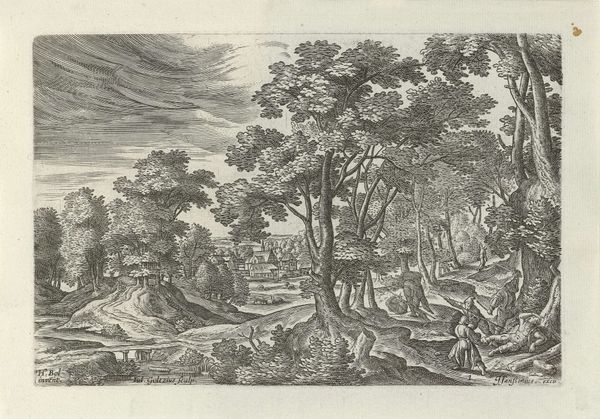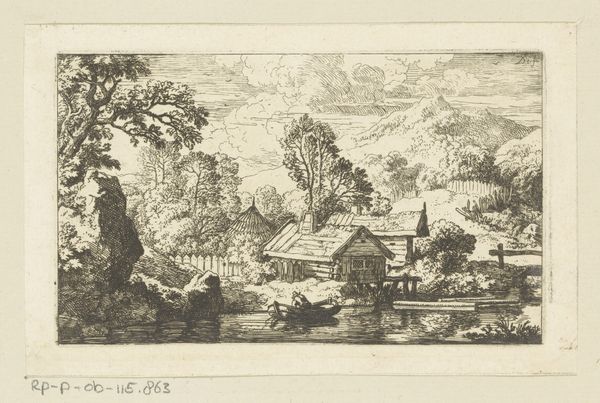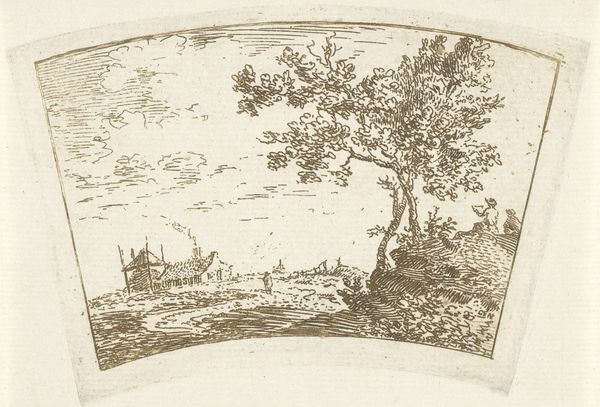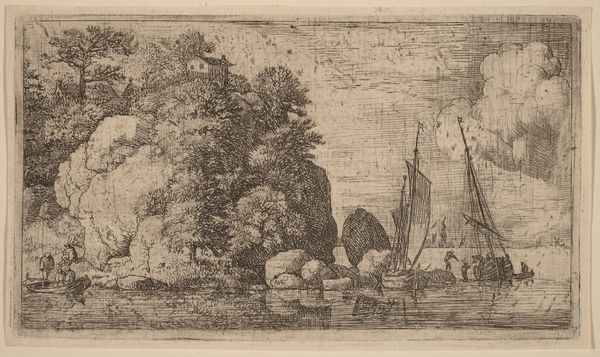
drawing, print, etching, engraving
#
drawing
# print
#
etching
#
landscape
#
mannerism
#
history-painting
#
engraving
Dimensions: height 116 mm, width 172 mm
Copyright: Rijks Museum: Open Domain
Curator: Welcome. We’re looking at “Landschap met de Emmaüsgangers,” or "Landscape with the Travelers to Emmaus", an engraving, etching, and print by Julius Goltzius, dating from around 1560 to 1595. It's currently held in the collection of the Rijksmuseum. Editor: This piece evokes a real sense of mystery and introspection, almost like peering into a half-remembered dream. The monochromatic palette really distills everything down to form and texture. Curator: Indeed. Note how the composition orchestrates foreground, middle ground, and background elements, deploying strategies typical of Mannerist landscape prints. Examine the density of foliage juxtaposed against the perspectival recession of the planes, producing both a detailed and allusive effect. Editor: The figures of Christ and the disciples heading to Emmaus are quite small but they lend a strange sense of humanity against the landscape's sublimity. Is this the feeling that whatever spiritual quest we find ourselves on is, yes, personal, but played out against a backdrop so grand it kind of swallows you whole? Curator: The interplay of scale is important here. Goltzius leverages contrasting dimensions to negotiate the human subject within a manifestly complex system. The landscape isn't merely setting; it embodies intellectual and emotional depth. The symbolic use of landscape features during the Mannerist period facilitated an exchange of ideas and perspectives on space, religion, and knowledge itself. Editor: The clouds especially feel dynamic, restless, adding to this feeling of heightened reality—almost like you are watching stagecraft unfold with spiritual allegory baked right in. I also love how Goltzius has managed to play with the negative space – the sky – its treatment being really quite unusual in period prints. Curator: A key aspect involves recognizing Goltzius' technical finesse in generating gradients and textures that approximate nuanced details. Through controlled variation of line thickness and hatching, the print activates atmospheric effects while maintaining representational fidelity. Editor: Well, I came in looking at a somewhat conventional landscape and end up contemplating this incredible integration of spirit, storytelling and just damn fine artistic skill. Julius Goltzius has made me see more in what I initially thought I understood perfectly well! Curator: Exactly. The print allows us access to the complex aesthetics and intricate semiotics interwoven through late sixteenth-century visual production. And its continued relevance in modern analysis stems from how Goltzius challenged—and transcended—pre-existing conventions.
Comments
No comments
Be the first to comment and join the conversation on the ultimate creative platform.

